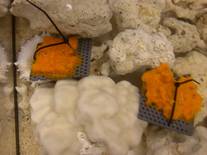The Isolation and Biosynthesis of Bengamides in the Marine Sponge of the Genus Jaspis
The bengamide group of compounds is potent and specific inhibitors of methionine aminopeptidase – an enzyme that plays an important role in the development of cancer.
The question of the biosynthetic origin of the caprolactam ring and the isopropyl unit of the bengamide structure was addressed by feeding experiments with C-14-labeled precursors.
In one experiment (18 days incubation period), the sponge Jaspis carteri was found to incorporate 0.0026% and 0.038% of the precursor [U-14C]-L-lysine and [U-14C]-L-valine respectively into the structure of bengamide B. In another experiment (35 days incubation period), the sponge Jaspis species was found to incorporate 0.015% of the precursor [U-14C]-L-lysine into the structure of bengamide B.
The degradation experiment revealed the sites of incorporation of these two precursors. The precursor [U-14C]-L-lysine was found to mainly incorporate into the cyclized part the bengamide B structure while [U-14C]-L-valine was found to mainly incorporate into the isopropyl side chain of the bengamide B structure.
The incorporation levels obtained in this study were quite low and therefore any detailed biosynthetic studies of bengamides using stable isotope of the above mentioned precursors are not recommended.

Sponges fed with radioactive precursors with assimilation period of 12hrs before being transferred into aquarium.

Sponges fed with radioactive amino acids are cultured in aquarium.
